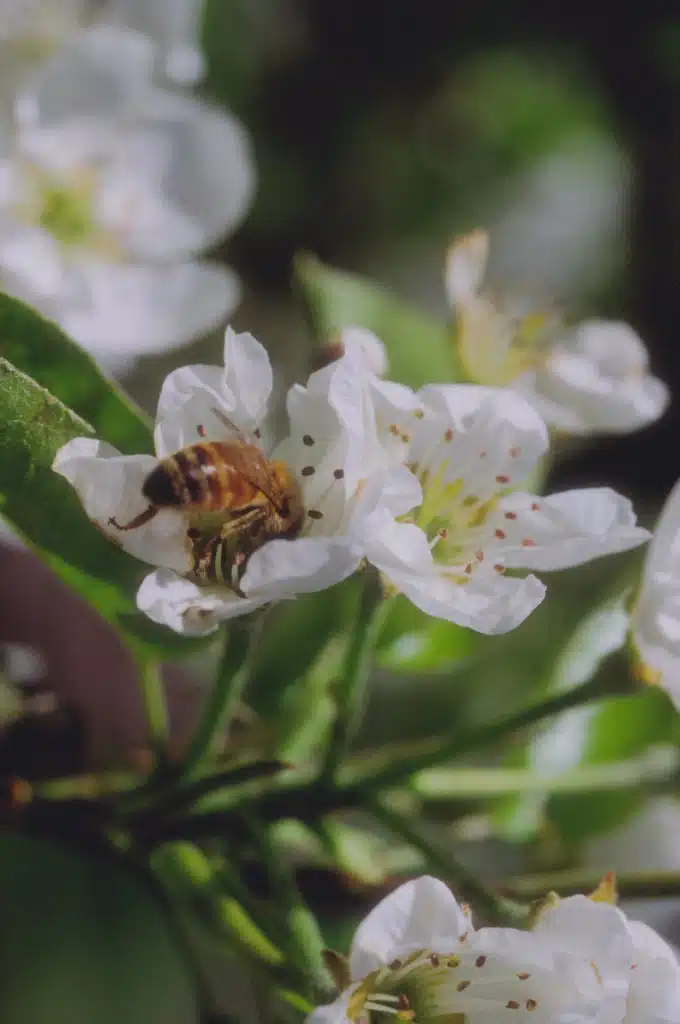What can bees teach us about speed shopping? Does trading off speed for accuracy pay?
Bumblebees have been shown to have very fine colour vision – which they can use to find up to 5,000 flowers a day.
A new study published in Nature casts light on how they do it – and may help us to learn from the bees how to design robot eyes in the future.
“We tested bumblebees in a colour discrimination task on a virtual flower meadow – when bees were punished for making mistakes, they slowed down and performed even better.”
We showed that some bees consistently make rapid choices but with low precision, while other bees are slow but highly accurate,” says Adrian.
“Moreover, individual bees sacrifice speed in favour of accuracy when errors are not just unrewarded, but penalised with aversive quinine reinforcement. This is the first demonstration of between-individual and within-individual speed-accuracy tradeoffs in an insect. It shows that bees can be trained to perform very difficult tasks.”
We also discovered that bees can discriminate between blue colours just as well as we can – if they learn to take their time.’ Once we thought bees could only see 100 colours – in fact their vision is as good as or better than ours. They’ve also got an amazing sense of smell.
Bees can also see ultraviolet colours. This is a capacity that we don’t have – humans have ultraviolet filters in our eyes. Adrian thinks that this is a trade off for colour constancy – our ability to adjust our perception of colour independent of external lighting.
Why should we care about bee vision? By studying bees we can learn about our own vision and gain insights into how we might design vision systems for robots and other machines. Bees are also essential pollinators for many agricultural crops and have potential as drug and bomb detectors. And I think it’s worth understanding how bee vision works for the sheer wonder of it. They are remarkable creatures.”
Adrian is now researching face recognition at La Trobe University in Melbourne Australia.
Adrian is presenting his research to the public for the first time thanks to Fresh Science, a national program to bring public attention to the remarkable unsung achievements of young Australian scientists.
He will be speaking to the public and school students about his work on Tuesday 19 and Wednesday 20 August at the Melbourne Museum.
Post Doctoral Fellow La Trobe University
Adrian Dyer
The significance of colour vision for bees.
The biological significance of colour vision for bees.
To understand the evolution of colour vision it is important to test how visual systems operate in different situations. Bumblebees are shown to have extremely fine colour discrimination, and individual bees use different strategies to achieve this. However, colour vision is degraded by changes in illumination colour, which helps explain why some flower colours are extremely rare in nature.
Project description
The study of colour vision in bees allows a unique opportunity to understand the relationship between the bees’ sensory capabilities and the plant flowers that they visit to collect food. It is known that plants have evolved flower colours to suit the visual system of bee pollinators, but it was previously unclear why certain flower colours were rare in nature.
To test how reliably bees discriminate between similar colours a virtual meadow was built and artificial flowers were projected onto a screen for bees to choose between. There was found to be significant variability between the strategies bees used to solve problems. Some bees were slow and careful, and made few mistakes. Other bees were faster, but were prone to making more errors. The bees capabilities were impressive and showed that insects are able to make colour discriminations that are close to the limit of human sensory capabilities.
This study then tested how well the bees sensory system deals with the problem of flowers being very similar in colour. This allowed the evaluation of a model of colour constancy, which is the ability of a visual system to see colours as the same even when the illuminating light changes in colour. An indoor foraging environment was built and bumblebees were tested with plastic flowers to see how decisions were made about which flowers were beneficial to visit. This experiment yielded exciting results that help explain how and why plants produce such a wide variety of plant colours and shapes. Bees were poorer at choosing between certain similar colours when the illumination colour was varied, and this fits well with a classical model of colour constancy proposed 100 years ago. The study suggests that there is considerable ecological pressure on plants to diverge flower colour and/or shape so that bees do not mistake flowers of different species.
The study has provided several important answers about why plants have evolved certain flower signals to attract pollinating bees. These results allow an understanding of the building blocks of colour visual systems, and what the limitations of these visual systems are in real world environments. Thus, by studying systems that have had interactions for millions of years it is possible to understand what are the benefits or costs of using a particular visual system.





 Fresh Science is on hold for 2022. We will be back in 2023.
Fresh Science is on hold for 2022. We will be back in 2023.